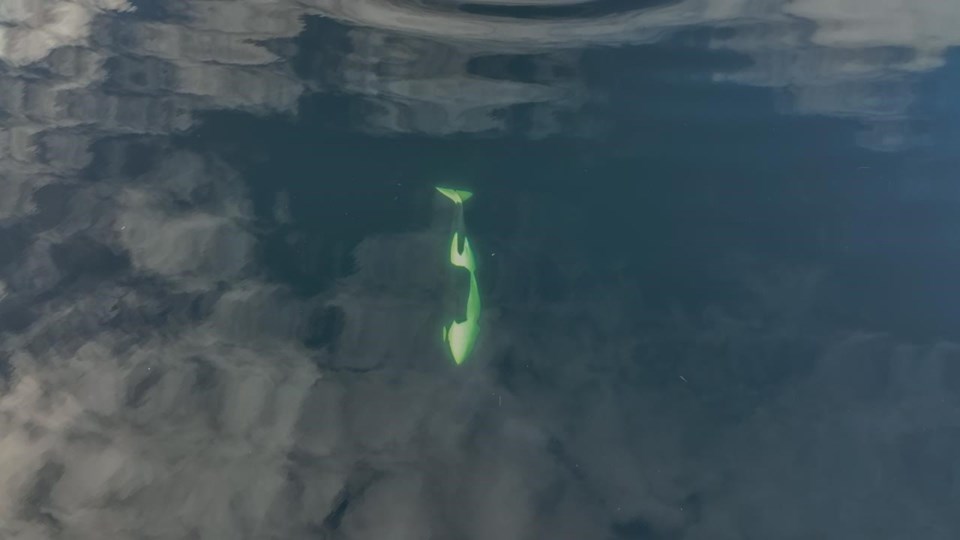ZEBALLOS, СŔ¶ĘÓƵ — The young killer whale stranded in the lagoon off Vancouver Island is a girl.
A statement from the Fisheries Department on Friday says drone images have determined that the calf given the First Nation name Kiisahi?is, or Brave Little Hunter, is female.
It says the calf remains active in the lagoon and crews are monitoring her with minimal disturbance.
The department says planning for a rescue operation to transfer her to an open ocean net pen continues, but the attempt is "unlikely" to begin early next week.
Access to the lagoon will be closed to all but essential personnel when the rescue takes place, it says.
The calf was left alone on March 23 when her mother, who was pregnant, was stranded and died in the lagoon during a low tide.
Rescuers say they will search the ocean off Vancouver Island for the calf's pod, hoping to reunite her with her family once she is transferred to a net pen after the rescue.
The Ehattesaht First Nation located in Zeballos has been leading the rescue operation along with the Fisheries Department and other marine mammal experts.
Chief Simon John said he expects the Jet Ranger helicopter that the band has for forestry work will be used to look for the calf's family pod.
John said equipment for the planned rescue has started to arrive in their remote community, located more than 450 kilometres north of Victoria.
A heavy lift machine the First Nation also uses in forestry work will arrive in Zeballos this weekend and could be used in the rescue effort.
John said a large seine net more than 270 metres long arrived from Campbell River on Thursday and is expected to be used to corral the young killer whale in a shallow area of the lagoon, before it's put in a sling and transported to a pen in ocean waters.
The rescue team is waiting for the arrival of the net pen similar to those used by СŔ¶ĘÓƵ salmon farms to house the young orca at a yet-to-be-determined location, John said.
John said that earlier plans to use a helicopter to lift the killer whale calf out of the lagoon have been overtaken by the effort to move it from the lagoon to the net pen by a specially outfitted vehicle, landing craft or boat.
Brett Jensen of Port McNeill, СŔ¶ĘÓƵ, was in a flat-bottom jet boat near the lagoon shoreline on Friday.
He said it was a "privilege" to be taking part in the rescue operation.
Jensen, who's a resource manager for Campbell River-based Strategic Natural Resources Consultants Inc., said he was on the water in the tidal lagoon surveying the area in preparation for the rescue attempt.
"To be part of it is pretty special," he said.
This report by The Canadian Press was first published April 5, 2024.
Dirk Meissner, The Canadian Press
Note to readers: This is a corrected story. A previous version cited a Fisheries Department statement as saying a rescue attempt was likely early next week. In fact, it said this was unlikely.




